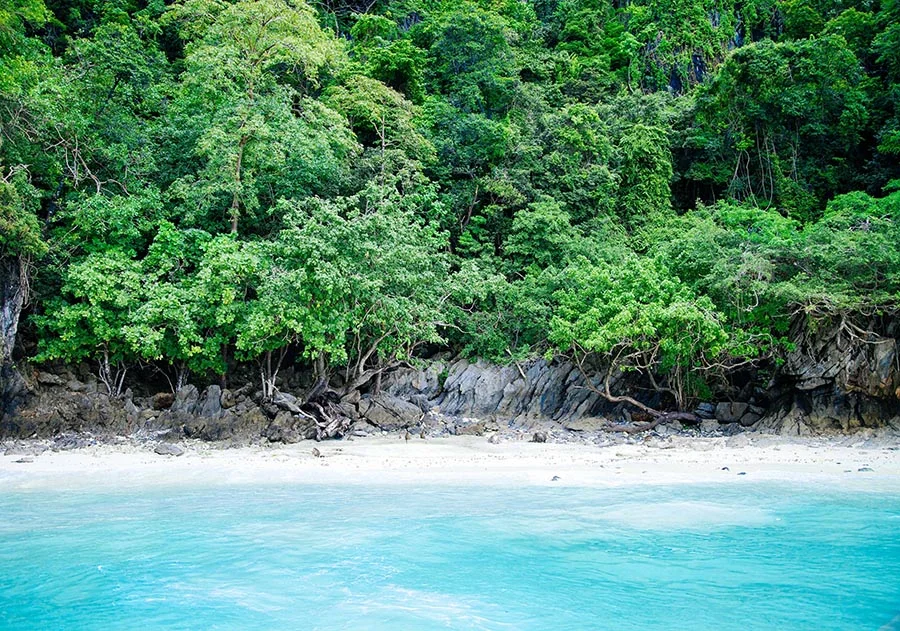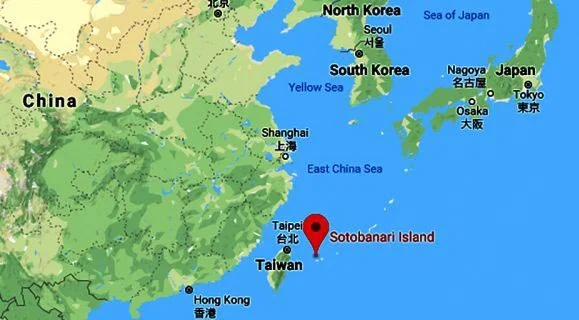Modern-Day Hermits: Japan’s “Naked Hermit”
Masafumi Nagasaki lived alone, in the nude, for 30 years on a deserted island. He planned to die there, but then something changed that.
By Jessie Schiewe
“Modern-Day Hermits” is an ongoing series about the rare and fascinating people who’ve chosen solitude over everything else. Read more profiles here.
Sotobanari is a lush tropical island in Okinawa, Japan, that is a beautiful place to visit, but not necessarily somewhere you’d want to live.
Shaped vaguely like a kidney, it is tiny, measuring just over 0.6 miles at its longest point. There is no natural running water on the island and the climate is extreme, plagued by hot weather, humidity, and frequent typhoons. At night, you’ll get feasted on by mosquitos, and during the day you’ll dodge the island’s community of poisonous pit vipers. Your interaction with the outside world will also be extremely limited. Fishermen reportedly don’t even bother to visit.
Put this way, Sotobanari sounds like the opposite of paradise. Yet that’s likely the very reason why Masafumi Nagasaki is so fond of it. The inhospitable and challenging environment scares most people away and for 29 years, allowed the so-called Naked Hermit to live on it alone, without confrontation or hassle from others.
Nagasaki, who lived there from the age of 53 to 82, had to learn quickly how to survive on the hostile piece of land. Shortly after his arrival in 1989, a massive typhoon hit, washing away the clothes and the tent he’d brought and the shrubbery he’d used for shade cover, Reuters reports.
“I just scorched under the sun,” Nagasaki told the news outlet in 2012. “It was at that point I thought this was going to be an impossible place to live.”
But the now-83-year-old made it work. Since there is no fresh water on the island, he set up a series of battered cooking pots to collect rainwater for drinking, cooking, and shaving. He kept track of the days by making chalk marks on a large boulder and he relied on a wristwatch fastened to a tree to help him keep to a schedule.
In the mornings, he’d do stretches in the sun along the beach. The rest of his days were usually spent looking for food or cleaning up the beaches using a trusty rake and white gloves. Without fail, Nagasaki would be in his tent everyday by 6:30 p.m. to avoid getting bitten by bugs, and he’d remain there until 8:30 a.m. the following day.
“You can’t beat nature so you just have to obey it completely,” he told Reuters. “That’s what I learned when I came here, and that’s probably why I get by so well.”
Nagasaki adapted to his modern-day hermit life so well that he eventually stopped wearing clothing altogether.
Other than a pair of sandals and a headscarf, the leathery skinned old man spent his days on the island completely naked.
“Walking around naked doesn’t really fit in with normal society, but here on the island it feels right, it’s like a uniform,” he said. “If you put on clothes you’ll feel completely out of place.”
But Nagasaki wasn’t entirely without help during his years living as a naked hermit on Sotobanari. Once a week, he would throw on clothes and take an hour-long boat trip to buy supplies from another island. Using the 10,000 yen ($120) his sister routinely sent him, he’d stock up on bottled water and food.
For most of his meals, the Naked Hermit ate rice cakes boiled in water. He also became a vegetarian while living on the island, choosing to forego both meat and fish because he felt “sorry” for the animals. During the times of the year when there was an abundance of freshly laid sea turtle eggs on the beaches, he refused to eat them as well.
Given Nagasaki’s urban background, his decision to forgo society and live as a modern-day hermit was a somewhat surprising move.
A self-described “city man with no outdoor experience,” Nagasaki was once a photographer and the owner of a hostess club in an Okinawa port city. He was also, according to the Mirror, possibly married with two kids.
He reportedly learned about Sotobanari through a man he worked with in a factory in Osaka at some point in his life. As he aged, his desire to escape the pollution and crowdedness of city life grew. Meanwhile, the possibility of retreating to Sotobanari became ever more tempting. By the time he turned 53, Nagasaki could resist the urge no longer and set off for the secluded island.
At first, he planned to stay there for about two years. But life as a naked hermit suited him better than he’d expected and it wasn’t long before Nagasaki had abandoned any and all plans to ever leave Sotobanari. Just one year short of living for three decades on the island, he clearly felt a connection with its craggy beaches, clear, blue waters, and isolated environment.
Whereas on the mainland, people made him feel “like an idiot,” on Sotobanari, he said, he’d never “felt sad” or negatively in any way.
When the Naked Hermit eventually did leave in April 2018, it wasn’t by choice.
Weak and not acting as his usual energetic self, Nagasaki was forcibly removed from the island by police after someone told the authorities he’d been looking ill.
Which, he was. Nagasaki had been sick for so long — likely with a case of the flu — that when the authorities arrived on Sotobanari he was reportedly too weak to fight back, News.com.au reports.
The 83-year-old received medical care, but rather than return to the island once he got better, he was told he had been evicted and could never return.
Nagasaki had feared getting sick for this very reason. A few years before it happened, he’d told a visiting photojournalist that he wanted nothing more than to live on the island until his death.
“My wish is to die here without bothering anyone, that’s why I don’t want to get sick or injured,” he said. “I want to be killed by a typhoon so nobody can try to save me. To die here is the best. It’s just perfect for me.”
Since his eviction, the Naked Hermit has been living in government housing on Ishigaki, a commercial island more than 37 miles away from his beloved Sotobanari. Around 48,000 people populate it — 47,999 more than Nagasaki might like.









